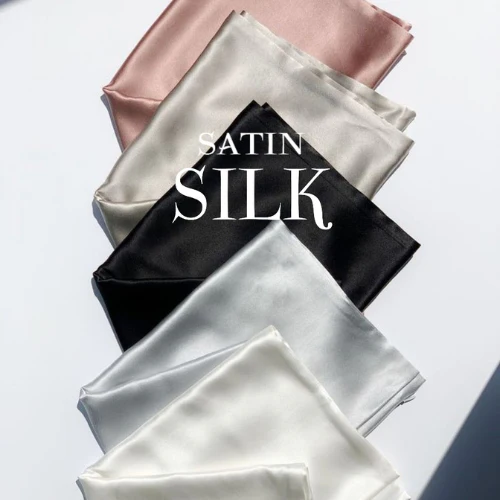The History of Hijab
To fully appreciate the crimp hijab, it’s helpful to understand the history of the hijab itself. The concept of the hijab dates back to ancient civilizations where modesty practices and veiling customs were common among many groups. However, in the context of Islamic tradition, the hijab holds specific cultural and religious significance.
In Islam, the hijab is more than just a piece of cloth—it’s a principle of modesty in behavior, speech, and dress. The idea of modest dressing is highlighted in the Quran, which speaks to both men and women about lowering their gaze and dressing modestly. This cultural concept of “hijab” or covering became a physical expression through clothing styles, primarily involving head coverings for women.
Over the centuries, the style, materials, and significance of the hijab have varied widely depending on cultural, regional, and societal norms. Today, hijab fashion has become a global phenomenon, blending cultural heritage with modern fashion trends. Different types of hijabs, including the crimp hijab, have become popular choices in fashion-conscious Muslim communities.
Emergence of the Crimp Hijab
The crimp hijab emerged relatively recently as part of a wave of modern hijab fashion. It rose in popularity largely due to its practicality and unique aesthetic appeal, which offered a different look from traditional hijabs that typically use smooth, lightweight fabrics like chiffon, silk, or jersey.
Crimped fabrics have been used in fashion for decades, not only in hijabs but in clothing more generally. Crimping, in the context of textiles, refers to the process of creating waves or pleats in the fabric, giving it a textured look. In hijabs, this texture adds volume and a “lived-in” look that many find appealing, especially for everyday wear.
While it’s difficult to pinpoint an exact origin or designer responsible for introducing crimp hijabs, their rise parallels a trend toward more casual, easy-to-wear hijab styles. The crimp hijab appeals to women seeking fashionable options that are both comfortable and versatile, aligning with contemporary trends for more effortless, chic looks.
Characteristics of the Crimp Hijab
- Material and Texture: Crimp hijabs are typically made from materials that hold pleats well. Lightweight polyester, cotton, and blends are commonly used for crimp hijabs, as these materials can be easily manipulated into a crimped or wrinkled texture. The fabric’s texture is one of the main draws, as it adds visual interest without the need for patterns or prints.
- No-Iron Convenience: One of the biggest benefits of the crimp hijab is its low-maintenance nature. Because of its textured, intentionally wrinkled appearance, it doesn’t require ironing. This is a welcome relief for many wearers who want a stylish look without the hassle of constant upkeep.
- Versatile Styling Options: Crimp hijabs can be styled in numerous ways, from loose draping around the shoulders to a more fitted wrap. The texture of the fabric provides natural volume, which can enhance the look and create a fuller appearance without additional layers or undercaps.
- All-Season Wear: Crimp hijabs are often lightweight, making them suitable for year-round wear. Some varieties are made with a slightly heavier weave for colder climates, but generally, they remain breathable and comfortable, adapting well to different seasons.
- Variety in Colors: Just like other hijabs, crimp hijabs come in a wide range of colors, from neutral tones to vibrant shades. This versatility allows women to choose colors that match their outfit or personal style, making the crimp hijab adaptable for both casual and formal wear.
ATTENTION:In response to environmental concerns, some brands have started to offer crimp hijabs made from sustainable and eco-friendly materials.
Styling Tips for Crimp Hijabs
- Effortless Everyday Look: One of the appeals of the crimp hijab is its ability to look chic with minimal effort. To achieve a casual, everyday look, drape the hijab loosely around the head and shoulders, letting the natural texture create volume. This style pairs well with laid-back outfits, making it an ideal choice for day-to-day wear.
- Layering for Volume: Because the crimp texture naturally adds volume, crimp hijabs work well for layering without looking bulky. To create a fuller look, you can layer two crimp hijabs of contrasting colors or shades. This creates a unique effect that’s perfect for special occasions or for women who prefer a more elaborate look.
- Pin-Free Styling: The crimp texture helps the hijab stay in place more securely than smooth fabrics, which often require pins to avoid slipping. With a crimp hijab, you can often style it pin-free by tucking in the ends or tying it at the back for a secure hold.
- Formal Look with Accessories: Crimp hijabs are versatile enough for formal occasions as well. Pairing a crimp hijab with a brooch, decorative pin, or headpiece can elevate the look for weddings, formal events, or other occasions requiring a more sophisticated appearance.
- Contrasting Textures: The crimp hijab works well in outfits that play with contrasting textures. For example, pairing a crimp hijab with a satin dress or a leather jacket can create a stylish, textured look that feels dynamic and modern.
Conclusion
Crimp hijabs are a modern, fashionable twist on the traditional hijab, offering a low-maintenance and visually interesting option for hijabi women. Their unique texture and versatility make them a popular choice for everyday wear, special occasions, and everything in between. They also embody a shift in hijab fashion that emphasizes individual expression and practicality, allowing Muslim women to balance style with cultural and religious values.
The rise of the crimp hijab underscores the evolving nature of hijab fashion, where tradition meets innovation. By providing a practical, stylish, and diverse range of options, the crimp hijab has become a staple in the wardrobes of fashion-conscious women worldwide. Whether seen as a cultural symbol, a style statement, or a blend of both, the crimp hijab captures the spirit of contemporary hijab fashion—one that embraces diversity, confidence, and self-expression.
